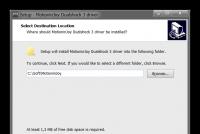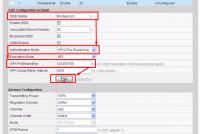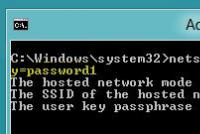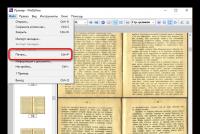Children's games. Children's games Play multiplication tables
Where to start learning the multiplication table?
Experienced teachers know that starting with simply memorizing examples is a mistaken, very ineffective and tedious path. Therefore, they do not ask to learn the first column of the multiplication table today, the second column tomorrow, etc.
It is much more effective to spend some time understanding the operation of multiplication, replacing each example with the sum of identical terms, counting by twos, threes, fours, etc. And only after that begin to memorize the examples themselves.
You can initially accompany each example with a picture, for example, as in our online game “Multiplication Tables with Pictures.” Click on the arrows to increase or decrease the multipliers, and watch how the number of apples in the picture changes:
Online game “Multiplication tables with pictures”
How to play:
To understand what multiplication is, write each example as a sum, starting with multiplying the number 2 by the numbers 1 to 10. Set the first number to 2 (click the second arrow). Then increase the second number (press the fourth arrow) by saying or writing:
2 X 2 = 2 + 2 = 4
2 X 3 = 2 + 2 + 2 = 6
2 X 4 = 2 + 2 + 2 + 2 = 8, etc.
That is, in each subsequent example there is an increase by 2.
After going through the multiplication of the number 2, set the first number to 3 by clicking on the second arrow, and the second number to 1 by clicking on the third arrow several times. And then go through the multiplication of the number 3.
This way you will go through all the multiplication tables and learn to count in twos, threes, fours, etc.
This skill will significantly reduce the load on memory when memorizing the multiplication tables and will make memorization more meaningful.
Interactive multiplication table
To multiply two numbers, click one of the numbers in the top yellow row and the second number in the left yellow column. The intersection of the blue bars will show the result of the multiplication.
By the way, the table clearly shows that when multiplying two numbers, the same result is obtained, regardless of where they stand, that is, 3 X 4 = 4 X 3, etc. This means that you will have to learn half as many examples if you memorize pairs of numbers. (For example: 8 and 2 - 16, 5 and 7 - 35).
Online simulators “Learning the multiplication tables with Lisa Simpson”
 |
 |
|
 |
 |
 |
 |
 |
Online games will help you master the multiplication tables - simulators in which you can choose numbers and difficulty.
It's no secret how important it is to know the multiplication and division tables, in particular when performing arithmetic calculations and solving examples in mathematics.
However, what if a child is frightened by this huge set of numbers called the “Multiplication and Division Table”, and knowing it by heart seems like a completely impossible task?
Then we hasten to reassure - Learning the entire multiplication table is very easy! To do this, you need to remember only 36 combinations of numbers (links of three numbers). Here we do not take into account multiplication by 1 and 10, since this is an elementary action that does not require much effort in memorization.
Description of how the online simulator works
This simulator works on the basis of a specially developed algorithm for increasing the complexity of examples: starting with the simplest numbers “2 x 2”, gradually increasing the complexity to “9 x 9”. Thereby smoothly drawing you into the learning process.
Thus, you will have to memorize the multiplication table in small portions, which will significantly reduce the load, since children will direct their attention to just a few examples, forgetting about the entire “large” volume.
The Simulator has a settings menu for selecting the table learning mode. It is possible to select an action - “Multiplication” or “Division”, a range of examples “The entire table” or “For some number”. All this is advanced functionality of the site and is available after payment.

Each new example is accompanied help tip, this way it will be easier for the child to start learning and remember new combinations unknown to him.
If, during the course of learning, any example causes difficulty, you can quickly remind yourself of its result by using additional hint, this will help you cope more effectively with memorizing difficult examples.
Percentage scale will quickly let you understand what level of knowledge of the multiplication tables you have.
An example is considered fully learned if the correct answer has been given 4 times in a row. However, upon reaching 100% , we urge you not to give up studying, but to come back the next day and refresh your knowledge by going through all the examples again. After all, it is regular exercise that develops memory and consolidates skills!
Description of the online simulator interface
Firstly, the simulator has a “quick access panel”, which includes 4 buttons. They allow you to: go to the main page of the site, turn on or off sound signals, reset learning results (start learning over), and also get to the reviews and comments page.
Secondly, this is the basic structure of the program.
Above all is percentage scale, displaying the approximate level of knowledge of the multiplication table.
Below goes example field, which needs to be answered. During the answer, it will change its color: it will turn red if an incorrect answer was given, green if a correct answer was given, blue after using the hint, and yellowish when a new example is shown.
Next is message line. It displays text information about errors, correct answers, as well as help and additional tips.
At the end is screen keyboard, containing only the buttons necessary for work: all the numbers, “backspace” - if you need to correct the answer, the “Check” and “Additional hint” buttons.
We are sure that this “Multiplication tables in 20 minutes” simulator will help.
Multiplication table.
How to learn the multiplication table - thousands of schoolchildren and their parents puzzle over this question year after year.
The games in this section are designed to help children learn the multiplication tables with pleasure, willingly and without any coercion. The games will introduce you to the multiplication tables; the material is presented in a simple, exciting and fun way. By solving fun problems and multiplication examples, children will not only gain the necessary knowledge, but will also find something to fill their leisure time with. Let's learn by playing!
It just so happens that the multiplication table is very important. It helps in various calculations; without mastering it, it is not possible to study well in school. And as an adult, you will use it often. Its importance is understood not only by people, but also by unusual creatures from our new game. They will check how well you know the multiplication table.
Play >>
Tigers also learn their multiplication tables by playing an educational game on a tablet. We invite you to play with them and find out how well you can multiply.
And in this game, you will have to dive into the depths of the ocean, where many beautiful fish live. And again, not an easy task awaits you, but a very interesting one - learning the multiplication table! If you're ready to go on an underwater adventure, then go ahead!
Puzzles with examples from the multiplication table.
Our puzzles will help you learn the multiplication tables better.
Here you can go on an unusual journey. Explore the vastness of the Universe in a spaceship and study the multiplication tables.
Accurate shooter
Here they shoot from a bow at targets. Choose the one that contains the answer to the example on the multiplication table. Be accurate and hit the bull's eye!
Multiplication table knowledge tests
You can use these games to test yourself to see if you have learned your multiplication tables well.
Solve examples and test your knowledge.
Game "Multiplication tables"
Use this code to enable the game "Multiplication Tables." to your blog or website.
Multiplication and division problems
Do you want your child to study mathematics with pleasure, willingly and without any coercion? Then you can’t do without these puzzles. They introduce arithmetic operations - multiplication and division, and the material itself is given in a very simple and fun way. Those who are still learning the multiplication table with these fun problems will easily be able to master its basics, and those who are already familiar with it will consolidate their knowledge.
By solving fun problems, examples and puzzles, children will not only gain the necessary knowledge, but will also find something to fill their leisure time with. We play and learn!
Where did the multiplication table come from?
The world's oldest multiplication tables were found during excavations in the cities of Ancient Mesopotamia.
They were inscribed using cuneiform script on clay tablets that are 5,000 years old. So, most likely, the multiplication table appeared somewhere in those parts.
Although it is also possible that this system of oral counting appeared independently in different places.
The multiplication table was first introduced into the school curriculum in England at the end of the Middle Ages. True, it was a multiplication table up to 12, which, by the way, young British people go through to this day. , which is also associated with units of the English system of measures of length (1 foot = 12 inches) and monetary circulation (which existed until 1971: 1 pound sterling = 20 shillings, 1 shilling = 12 pence).
But in India, students still cram the original version of the table - up to 20.
In Russia, the multiplication table is usually taught at the age of 8. But in English schools the multiplication table must be learned by the age of 11.
Multiplication tables are good for memory training!
Yes, it's true: the multiplication table is an excellent memory workout. But, like any other workout, it must be regular to achieve good results.
Learn the table gradually and do not try to cover all the numbers at once. If you want to learn the multiplication tables quickly, work with your child a little every day.
Multiplication table in verses
To make it easier to remember the table, you can use verses.
A. Usachev. Multiplication table in verses.
What is Multiplication?
This is a smart addition.
After all, it’s smarter to multiply times,
How to put everything together for an hour.
1x1
One penguin was walking among the ice floes.
Once alone - alone.
1x2
There is safety in numbers.
Once two is two.
2x2
Two athletes took weights.
This is: two and two are four.
2x3
The rooster sat before dawn
On a high pole:
- Crow!..Twice three,
Twice three is six!
A pair of forks stuck into the pie:
Two by four - eight holes.
2x5
They decided to weigh two elephants:
Two times five equals ten.
That is, every elephant weighs
Approximately five tons.
2x6
Met a crab with cancer:
Twice six equals twelve paws.
2x7
Twice seven mice -
Fourteen ears!
2x8
The octopuses went for a swim:
Twice eight legs is sixteen.
2x9
Have you seen such a miracle?
Two humps on the back of a camel.
Nine camels began to be counted:
Twice nine humps equals eighteen.
2x10
Twice ten is two tens!
Twenty, to put it briefly.
3x3
Two insects drank coffee
And they broke three cups.
What is broken cannot be mended...
three times three equals nine.
3x4
He talks all day in the apartment
Talking cockatoo:
- Three times four,
Three times four...
Twelve months a year.
3x5
The schoolboy began to write in his notebook:
How much is “three times five”?..
He was terribly careful:
Three times five equals fifteen spots!
3x6
Thomas began to eat pancakes:
Eighteen is three times six.
3x7
Three times seven is twenty one:
There's a hot pancake on my nose.
3x8
Three times eight is twenty four.
3x9
Three times nine is twenty seven.
Everyone needs to remember this.
3x10
Three maidens by the window
Dressed up in the evening.
The girls tried on the rings:
Three times ten equals thirty.
4x4
Four cute pigs
danced without boots:
Four times four equals sixteen bare legs.
4x5
Four scientist monkeys
We were leafing through books with our feet...
Each foot has five toes:
Four times five is twenty.
4x6
I went to the parade
Jacket potato:
Four times six is twenty four!
4x7
Chicks are counted in the fall:
Four times seven is twenty eight!
4x9
Baba Yaga's stupa broke:
“Four times eight” - thirty-two teeth! -
She has nothing to eat between her teeth:
- Four times nine is “thirty six”!
4x10
Forty forty walked
We found curd cheese.
And divide the cottage cheese into parts:
Four times ten is forty.
5x5
The hares went out for a walk:
Five five is twenty five.
5x6
A fox ran into the forest:
Five six makes thirty.
5x7
Five bears from a den
We walked through the forest without a road -
To slurp jelly seven miles away:
Five seven is thirty five!
5x8
Climb the centipede
Difficult up the hill:
Legs are tired -
Five eight is forty.
5x9
The guns stood on the hill:
Five eight - that's forty.
The guns started firing:
Five nine is forty five.
5x9
If you slurp cabbage soup with a bast shoe:
Five nine - forty five...
There will be this bast shoe
Drip on everyone's trousers!
5x10
Digging a bed of zucchini
Five dozen patches.
And piglets' tails:
Five ten is fifty!
6x6
Six old women were spinning wool:
Six six is thirty six.
6x7
Six networks of six ruffs -
This is also thirty-six.
And a roach got caught in the net:
Six seven is forty two.
6x8
Hippos of buns ask for:
Six eight - forty eight...
6x9
We don't mind the buns.
Open your mouth wider:
Six will be nine -
Fifty four.
6x10
Six geese leading the goslings:
Six ten is sixty.
7x7
Fools are not reaped, fools are not sown,
They themselves are born:
Seven seven - forty nine...
Let them not be offended!
7x8
Once a deer asked an elk:
- What is seven eight? -
Elk did not bother to look into the textbook:
- Fifty, of course, six!
7x9
Seven nesting dolls
The whole family is inside:
Seven nine crumbs -
Sixty three.
7x10
Seven fox cubs are taught at school:
Seven ten - seventy!
8x8
Vacuuming with his nose
Elephant carpets in the apartment:
Eight by eight -
Sixty four.
8x9
Eight bears were chopping wood.
Eight nine is seventy two
8x10
The best score in the world
New Year is coming...
Toys hang in eight rows:
Eight ten is eighty!
9x9
The little pig decided to check:
- How much is “nine by nine”?
- Eighty - oink - one! -
So answered the young pig.
9x10
The sandpiper is small, but the nose is:
Nine ten is ninety.
10x10
There are a dozen moles in the meadow,
Each person digs ten beds.
And at ten ten - a hundred:
The whole earth is like a sieve!
Secrets of the multiplication table for the number 9.
9 * 2 = 1
8
9 * 3 = 2
7
9 * 4 = 3
6
9 * 5 = 4
5
9 * 6 = 5
4
9 * 7 = 6
3
9 * 8 = 7
2
9 * 9 = 8
1
On fingers:
Place both hands on the table, palms down. Then let the little finger of the left hand be the first finger, the ring finger the second, the middle finger the third, etc., the thumb of the right hand the sixth, etc., the little finger of the right hand the tenth finger of both hands.
These fingers are an infallible counter
9 * 5 = 45
To solve this on your fingers, you just have to look at how many fingers from the 5th finger to the left and how many to the right: 4 fingers to the left are 4 tens, 5 to the right are 5 units, which means the answer will be 45.
9 * 7 = 63
From the 7th finger to the left there are 6, to the right there are 3 fingers, which means 63.
Adults should approach the organization of children's leisure as responsibly as possible, and students should use free minutes with special interest so as not to waste time. Most kids who are just learning the basics of arithmetic call the multiplication table a real instrument of torture. This is a useful tool that lays a solid foundation in the development of a child's intellectual abilities.
Stupid memorization is boring and uninteresting
Boring examples are easier to remember when learning takes place in a playful way. Test this effective method on yourself and get positive results very quickly.
The main differences between math toys for kids:
- Simple gameplay. To perform game manipulations, just click the mouse and get the correct answer;
- To increase the level of difficulty, there is a time limit and a limit on the number of errors, exceeding which you need to start all over again;
- A fun game format makes it much easier to remember the correct answers in columns and the basic principles of multiplication and division needed to solve simple examples.

Learn by playing with cool tutorials from Quicksave
Several persistent online classes will definitely bring the desired result. Don't miss the opportunity to test high-quality and informative games for kids for free to help them understand basic mathematical operations. Parents should be sensitive to possible difficulties when their child masters material that is incomprehensible at first glance.
Memorizing the algorithm for multiplying numbers and the child memorizing features and patterns without outside interference is a competent approach that turns a little spectacular fun into an exciting intellectual quest.
Without the multiplication table, just like without the alphabet, there’s nowhere! You learn it once and you will use it all your life - we need it in everyday life and professional activities! Let's look at effective techniques that will help your child learn the multiplication tables quickly and easily.
How to learn multiplication tables with your child: useful tips
Not every child succeeds in memorizing the multiplication table mechanically, and there is little point in it. Such memorization will not help understanding and manipulation of more complex mathematical operations, nor will it ensure the development of mental activity. That is why studying the table should begin only after understanding the very principle of multiplication.
Where to start mastering the multiplication table?
- At the first stage, you can explain to your child that multiplication is simply faster addition. Knowing that 3 x 2 can be replaced by addition (take 3 2 times), i.e. to 3 + 3, the child can easily calculate in his head.
- Explain to your child the principle of multiplication by 0 and 1. Children easily learn to multiply 0 and 1 by any number. After all, no matter what number you take 0 times, 0 will remain (for example, 5×0=0), and if you take a number 1 time, it will be the same number (8×1=8).
- Introduce your child to the rule of multiplying by 10. Explain to him that when multiplying by 10, you just need to add a zero after performing the operation with one (for example: 5 x 10 = 5 x 1 and add 0, or 5 multiplied by one ten will be 5 tens). Over time, the answers will become ingrained in memory and there will be no need to calculate them every time. But for this you need to exercise regularly.
- Help your child master counting in twos, threes, fives (2,4,6...), (3,6,9...), (5,10,15...) . By practicing this type of counting, your child will easily be able to remember examples of multiplication by 2,3 and 5. These basic cases will help him master more complex options.
- The technique of adding the required multiplier to the previous answer . If the child remembers how much 3 x 5 is, he will add the answer with a factor of 3 and get the following example of a multiplication table for 3.
- A technique for subtracting a number from a familiar product. Knowing the table for 10, you can calculate any example for 9. For example, 6 x 10=60, which means 6 x 9 is 60-6=54.
After the principle of multiplication is understood by the child, he can be introduced to the Pythagorean table.

Pythagorean table
How to use the Pythagorean table?
- Explain to your child that in the table, the rows and columns are headed by factors, and their products are in the table cells. Practice quickly finding products of different numbers up to 10 using a table. And let it always be at hand. There is no need to prohibit using it until all the examples are fully learned. Then the table will “remember itself.”
- If the baby understands principle commutative property of multiplication , there will be no need to memorize a significant part of the examples. It sounds like this: “The product does not change by rearranging the factors.” This means that 2×6 will be 12 and 6×2 will also be 12. And then the Pythagorean table will no longer seem so scary and big.
How to learn the multiplication table: games, cards
During school lessons, children are not allowed to play, jump, have fun, and often even move. The minutes of the lesson become painful for them, and learning becomes only a duty. Dry and uninteresting information is difficult to remember. It's much better to do it in a game, it's fun. One has only to show the second grader the attributes and tell the rules of the game, and his eyes immediately light up. Emotional memory is more effective than voluntary memory. There are many interesting games and exercises for painless and effective memorization of multiplication table examples. They arouse the child’s interest, motivate him and unobtrusively help develop his memory. Let's give a few examples with which you can achieve the desired goal without quarrels and tears.
Game "Fill in the colored squares"
During the game, the child must fill in the cells that make up a certain pattern on the Pythagorean table. For example, in the figure below you need to enter the products of numbers in the yellow cells that form the drawing of a dog. Have the student write down all the answers independently, not necessarily in order.

In the figure below, the form is divided into rectangles of different colors so that they do not merge into one. The exercise should be done daily until all multiplication cases are completely memorized. Incorrect answers must be written down on a draft and counted together with the baby.

Sherlock Holmes game
To play you will need:
- form with the Pythagorean table;
- simple pencils and colored pencils or markers.
The child needs to be given a code in the form of a sequence of multiplication examples, which, after filling in the answers in the table, will form some kind of picture. In order to solve the code, the child needs to find the works and color the square in which it is written.
Card game
On separate bright rectangles you need to write examples of table multiplication, and put a question mark instead of the answer. You can use ready-made cards by simply printing and cutting them.
The cut cards need to be mixed and pulled out one at a time. If the child counts the example on it correctly, then the card is eliminated from the game; if he makes a mistake, he returns it back.
Lotto
The game requires fields on which the answers and the examples themselves will be written in rectangles on separate cut cards. With these cards, the child must close the cells in the fields with the answers.
How to learn the multiplication table for 9 on your fingers?
Fingers are visual aids that are always “at hand.” With their help, a technique was invented for calculating multiplication by 9. To do this, you need to turn your hands with the backs of your hands towards you, mentally number your fingers, starting with the little finger of your left hand. When multiplying 9 by 1, we bend the finger at number 1 - 9 straightened remain, this is the answer. If you need to multiply 9 by 2, bend the finger at number 2. All fingers located to the left of the bent one will indicate the number of tens in the answer, and those to the right will indicate the number of units. One ten and 8 units is 18, the answer has been found! And so on.

Using your fingers, you can multiply by 2, alternately bending 1 finger on each hand, and after the fingers “run out”, start bending them again, but adding ten in your mind. In this case, you must first count the fingers that are bent, and then those that remain straight.
Verses for memorizing the multiplication tables
More complex examples can be learned using rhyming lines. Good poems were invented for this by Marina Kazarina, Tom Sobakin, Andrei Usachev and many other authors.
Almost everyone can learn the multiplication tables. If a child is able to count the example 2 X 2 in his head, then he is capable of this. But the criterion for knowing the table is the speed of the answer. Therefore, it is important to bring this mechanism to automation.
On saucers for six eat
There are six crackers each.
But will they be able to eat them?
After all, six is six -
Already thirty-six!
Multiplied tirelessly
Eastern sage,
And then to myself
Finally whispered:
"May he remember forever
Your head:
SIX SEVEN –
FORTY TWO…
Seven six forty two..."
There lived a forester in the forest.
Even in severe frosts
Since childhood he was accustomed to counting
Fir trees, pines and birches,
Let's ask the forester:
How much will
SIX EIGHT?
He will answer:
FORTY EIGHT…
Either a Christmas tree,
Either pine trees.
The hippopotamus was spinning
In the hot summer sky
And a simple song
At the same time he sang:
"Let them know about it
Children around the world:
SIX IS NINE
FIFTY FOUR!"
T. Sobakin.
We hope that the tips in the article will help your children learn the multiplication tables quickly and easily! But what to do if a child has difficulty writing or reading, read the articles about and.






